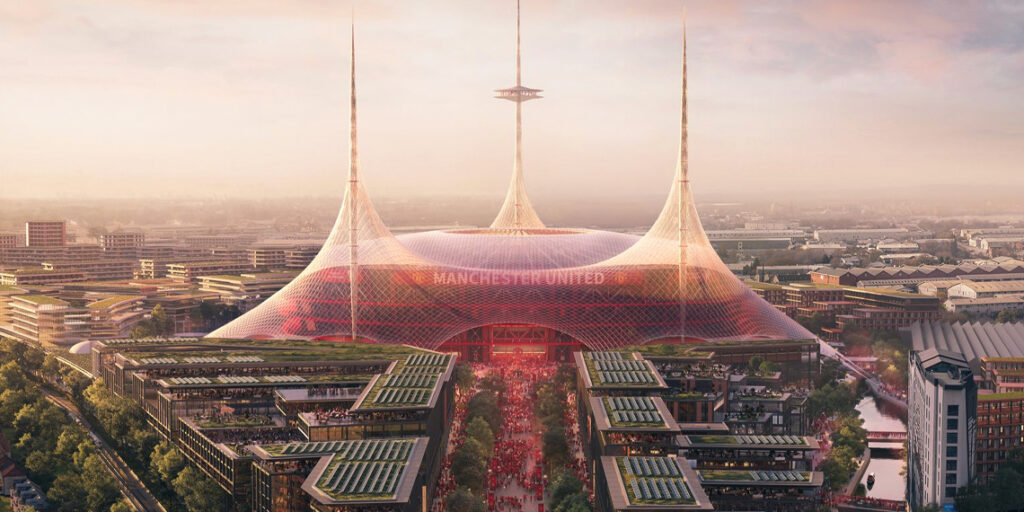Manchester United have announced ambitious plans to construct a brand-new 100,000-capacity stadium, which would be the largest in the UK, surpassing Wembley’s 90,000-seat capacity.
Minority owner Sir Jim Ratcliffe has long championed the idea of a state-of-the-art venue since acquiring nearly 30% of the club in February last year.
While initial discussions considered redeveloping the historic Old Trafford, United have now confirmed that an entirely new stadium will be built adjacent to the current site.
A Game-Changing Project for Manchester
The proposed stadium is being developed in collaboration with the government’s regeneration task force, chaired by Lord Sebastian Coe, and designed by renowned architectural firm Foster + Partners.
The project aims not only to replace one of football’s most iconic grounds but also to revitalise the surrounding area, bringing significant economic benefits.
Sir Jim hailed the plans as a blueprint for the “world’s greatest” football stadium but did not clarify whether Old Trafford would be demolished.
According to Manchester United, the development could inject billions into the UK economy, create up to 92,000 jobs, and deliver over 17,000 new homes.
Cutting-Edge Design and Fast-Track Construction
Lord Norman Foster, founder of Foster + Partners, revealed that the £2 billion stadium would incorporate cutting-edge prefabrication methods, allowing for a rapid five-year construction period.
He described the design as being sheltered by a “vast umbrella,” capable of harvesting energy and rainwater while covering a public plaza twice the size of Trafalgar Square.
However, the exact timeline remains uncertain, as Sir Jim noted that progress would also depend on the government’s wider regeneration plans.
Economic and Community Impact
Leadership figures involved in the project have highlighted its potential to transform Manchester and the North West. Greater Manchester Mayor Andy Burnham stated: “If we get this right, the regeneration impact could be bigger and better than London 2012.”
Despite the excitement surrounding the stadium plans, Manchester United have struggled on the pitch this season, languishing in the lower half of the table. Additionally, cost-cutting measures and staff redundancies under Sir Jim’s stewardship have drawn criticism.
Speaking on the eve of the announcement, Sir Jim defended his financial decisions while admitting that some players were “not good enough” and likely overpaid.
While he has been the face of the club’s recent belt-tightening, majority owners the Glazers remain the primary target of fan protests. Many supporters accuse them of financially draining the club since taking over in 2005, blaming them for its current struggles.
As Manchester United push forward with its ambitious stadium plans, the club’s future—both on and off the pitch—remains a subject of intense debate.


